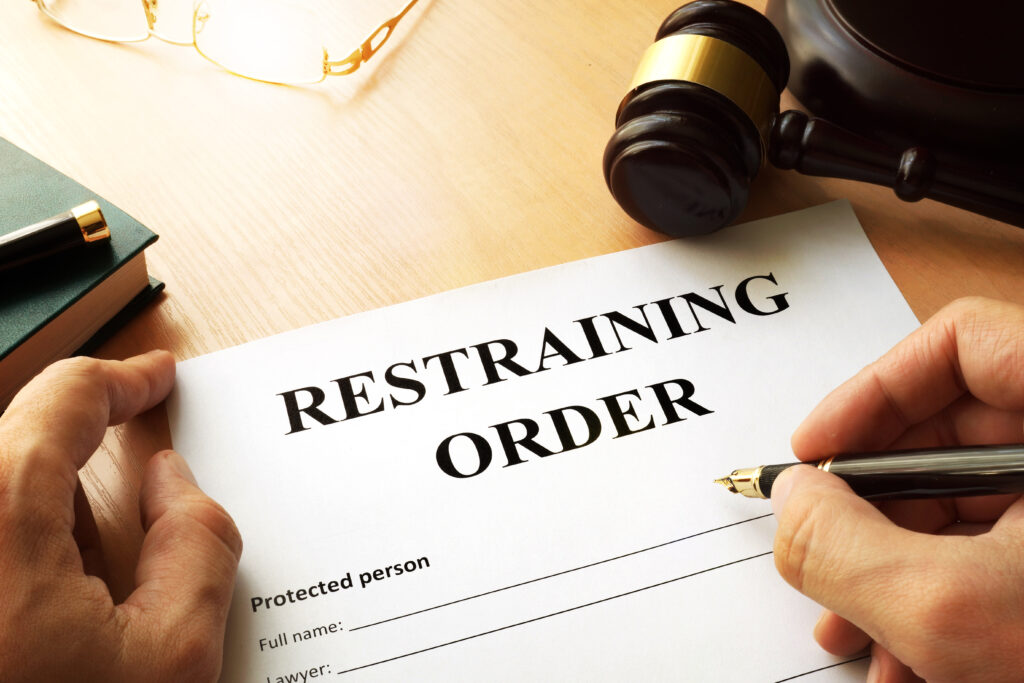An Order of Protection (“OOP”) can be obtained by any individual against one other person who may or has committed an act of domestic violence within the past year against the person seeking the Order of Protection. In order to obtain an Order of Protection, the individual must provide the following information contained in the Petition for an Order of Protection, pursuant to A.R.S.§13-3602, as follows:
1. Name of the plaintiff. The plaintiff’s address and contact information shall be disclosed to the court for purposes of service and notification…
2. Name and address, if known, of the defendant.
3. Specific statement, including dates, of the domestic violence alleged.
4. Relationship between the parties pursuant to section 13-3601, subsection A and whether there is pending between the parties an action for maternity or paternity, annulment, legal separation or dissolution of marriage.
5. Name of the court in which any prior or pending proceeding or order was sought or issued concerning the conduct that is sought to be restrained.
6. Desired relief.
An Order of Protection in Arizona is a valid court order issued to prohibit the named defendant from contacting, approaching or calling an individual or limiting how the calls or contact is to occur. An Order of Protection can also grant an individual “exclusive use” of a home, thereby kicking out the defendant from the home, regardless of who’s name is on the lease, title, deed or rental agreement. The Order of Protection is valid for 2 years from the date the defendant is served and only becomes effective once the defendant is served.

Steps to Obtaining and Order of Protection in Arizona
Obtaining an order of protection in Arizona involves several steps to ensure the safety and well-being of individuals who are experiencing domestic violence or threats of harm. Here is a general outline of the steps involved in obtaining an order of protection in Arizona:
1. Prepare the Petition: The first step is to prepare the petition for an order of protection. This document outlines the details of the abuse or threat and why you are seeking protection from the court.
2. File the Petition: Once you have prepared the petition, you will need to file it with the appropriate court. In Arizona, orders of protection can be obtained through any Superior Court, Municipal Court, or Justice Court.
3. Review by the Court: The court will review your petition and determine whether there is enough evidence to issue an order of protection.
4. Issuance of Order: If the court finds that there is a reasonable cause to believe that domestic violence has occurred or may occur in the future, they will issue an order of protection. The order will specify what protections are granted and how long it will remain in effect.
5. Service of Order: Once the order is issued, it must be served on the defendant (the person from whom you are seeking protection). Law enforcement officers can assist with serving the order if needed.
6. Court Hearing: A hearing may be scheduled after the initial issuance of the order where both parties have an opportunity to present their case before a judge.
7. Extension or Modification: Depending on your situation, you may need to seek an extension or modification of the existing order at some point.
It’s important to note that each case is unique, and specific requirements may vary depending on individual circumstances. It’s advisable to seek legal advice or assistance when pursuing an order of protection to ensure your rights are protected throughout this process.
There is no fee associated with filing or requesting an Order of Protection and an Order of Protection can be obtained through any Superior Court, Municipal Court or Justice Court; however, if there is a pending family law matter, then the order of protection must be obtained through the Superior Court. Typically, most order of protections must be submitted through AZPoint and the individual will select which court they are requesting to review the Petition for the Order of Protection and to subsequently issue the Order of Protection. The Court will issue an order of protection if the defendant may commit or has committed an act of domestic violence within the past year.
Finally, a violation of the Order of Protection can cause significant consequences. Specifically, violation of an Order of Protection is a class 1 misdemeanor and the defendant faces up to 6 months in jail or prison. If you or someone you knows need to obtain an Order of Protection or are the Defendant named in an Order of Protection, you need to seek an experienced attorney. Call Dodge & Vega for a free consultation to know your rights.
You will want to seek guidance from an experienced family law attorney who can help secure your order of protection and protect you. Call Dodge & Vega for a free consultation today: 480-656-8333, or contact us here.
Establishing paternity is a fundamental step in family law that has far-reaching legal, emotional, and social consequences.
Acknowledging paternity not only grants legal rights and responsibilities to the father but also supports the emotional bond between a child and their dad. Understanding the methods of establishing paternity, its legal implications, and the best interests of the child is essential for all parties involved. Legal guidance from a qualified family law attorney can help navigate the complexities of paternity and ensure that the process is in the best interests of the child and all those involved.